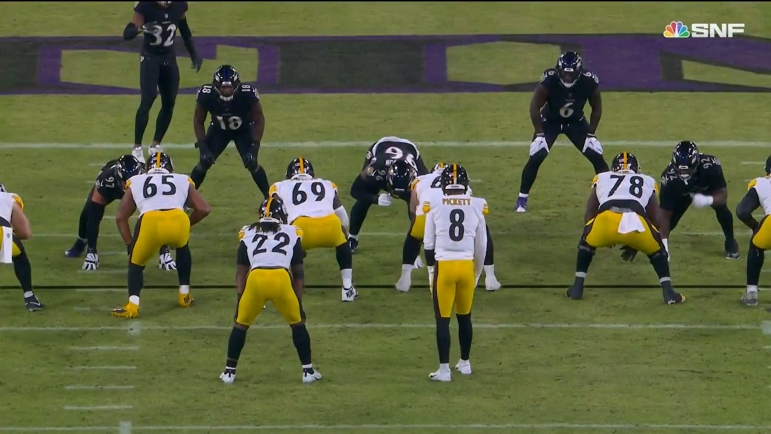One more series before we get into training camp and speed ahead towards the Pittsburgh Steelers’ regular season. A numbers to note campaign, focusing on one specific number we want to see the Steelers change in 2023. Some may be individual, some unit, and some team. Let’s start with the first of the series.
Numbers To Note: Kenny Pickett’s Red Zone Completion Percentage (41.5%)
Context is always king so let’s start with it. Pickett’s 41.5 red zone completion percentage last season was second worst in football of quarterbacks with 15+ such attempts, 41st out of 42 qualifiers. Pickett finished his rookie year going 22/53 for 165 yards, five touchdowns, and one interception. It resulted in a QB rating of just 73.2, which slotted him only slightly better among qualifiers, 39th overall.
Of course, completion percentage and QB rating have a correlation. As Pickett’s completion percentage increases, so will his QB rating.
It’s something I may take up but it’s probably worth examining why Pickett’s rate was so low. There’s always an array of variables that go into it, not all of which are directly controlled by the quarterback. A receiver drops a pass, it still hurts the completion percentage. Pressure that forces a throwaway still dings the QB. And our King Context isn’t fully examined with this one stat to note.
Still, it’s hard to be a successful red zone quarterback or red zone offense if you’re completing barely more than 40% of your passes. In our examination of Pickett, we noted his accuracy was actually better downfield than in the short game and red zone play is all about the short game. If he improves his ball placement and anticipation, two things we noted, his number here will rise.
So what’s the bar? Of quarterbacks with 15+ attempts, the highest completion percentage last season went to Pickett’s likely Week One counterpart, San Francisco’s Brock Purdy at 75%. Dak Prescott was the only other quarterback above 70%. If Pickett can sit in the high 50s, low 60s, he’ll be in the Patrick Mahomes/Joe Burrow range, which seems acceptable enough. Because of the more condensed space, completion percentages are always going to be lower in the red zone than overall (55.1% in red zone versus 65.6% everywhere else) so the bar can’t be set like normal.
For the last two seasons, Pittsburgh’s red zone offense has been ranked 23rd in football. If that’s going to change, so will Pickett’s number. Red zone and overall offensive production are just the output of all the inputs. How efficient you are, how well you take care of the football, all the individual numbers totaled up into an outcome.
But Pickett needs to raise his game. Again, he’s not alone. Everyone on this offense can and needs to elevate their play. But it all revolves around the quarterback. He’s the starting point to end drives.








